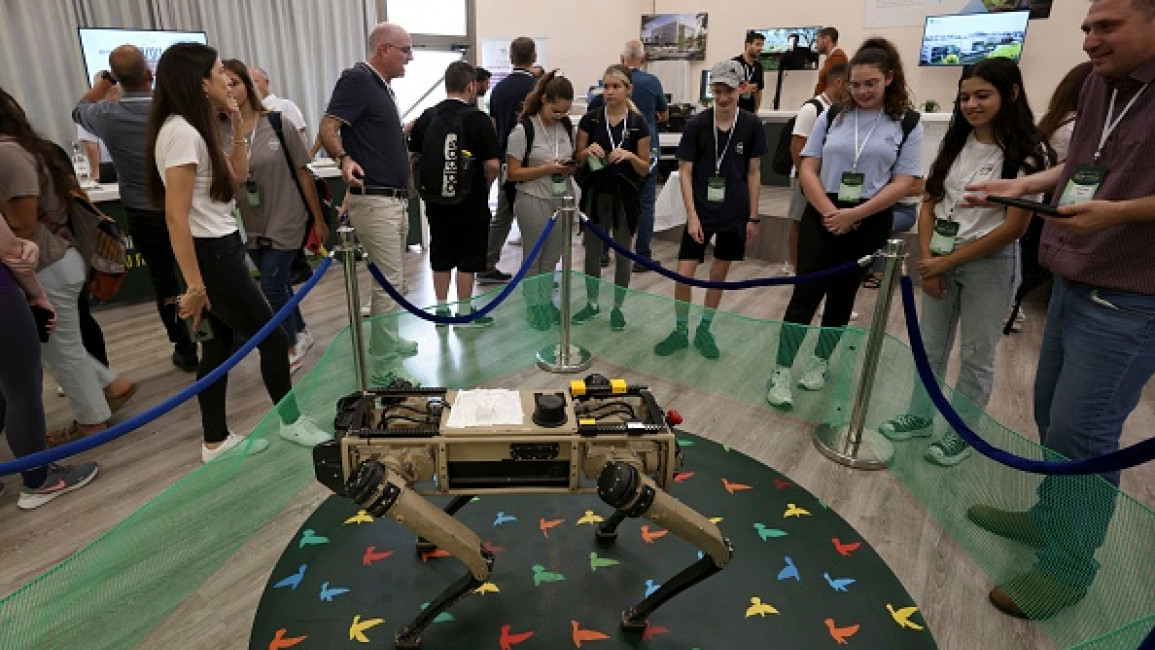'Robodogs' part of Israel's 'army of robots' in Gaza war
The Israeli military is increasingly using combat robots, including so-called "robodogs", in its war on Gaza, according to a report on Wednesday.
The Israeli army is using "robotic unmanned combat systems", some of which are powered by artificial intelligence (AI), to protect soldiers and military dogs during its invasion of the Palestinian territory.
Vision 60 units, which are semi-autonomous dog-shaped walking robots created by US-based tech company Ghost Robotics, are being used by Israeli forces in tunnels to identify traps and enemy positions. The robots are also being used for the surveillance of alleged enemy positions.
The units, referred to as "robodogs", are equipped with sensors, recording equipment, and systems that enable them to operate in an unknown environment.
They can walk for up to a distance of 10km at a speed of three meters per second and can control their walking speed and halt without human command.
Another robotic unit deployed in Gaza is the Rooster, developed by the Israeli firm Robotican.
The Rooster is a unique drone encased in a wheeled structure, enabling it to traverse diverse terrain. When needed, it possesses the ability to "jump" and fly, overcoming obstacles like steps and enabling it to fly through windows.
"The goal is to go in ahead of the troops to spot traps and other dangers," said Hagai Balshai, CEO of Robotican to Haaretz.
"This robot has been operational for a few years, yet its relevance has surged due to the nature of urban and subterranean combat."
The use of robots in war is not new for Israel – in 2012, it openly advertised its “army of robots”.
Nor is the use of such devices and weapons confined to Gaza. In the occupied West Bank, Israel has deployed robotic weapons in guard towers overlooking potential flashpoints of violence, most notably in Hebron. These devices can attack Palestinians with tear gas and sponge-tipped bullets.
Human rights organisations have raised ethical concerns over Israel’s use of robotic and autonomous systems, with a Human Rights Watch report warning that it could "help automate Israel’s uses of force" against Palestinians.
Since the beginning of its war on Gaza, Israel has been using the Palestinian enclave and the occupied territories as a "testing ground" for robotic and AI-guided weaponry and other combat devices, Israeli newspaper Haaretz reported.
With the UN's highest court ruling Israel is plausibly committing genocide in Gaza, the use of robotics and AI by the Israeli military has driven fears of the use of high-tech weapons being used against civilians.
"We cannot separate Israel’s achievements in AI from its occupation of Palestinians," argued Anwar Mhajne, assistant professor of political science at Stonehill College in Massachusetts told i.
Israel buys these robots from an American company called Ghost Robotics to help them exterminate the Palestinians. Each of these robotic dogs costs 165,000 US dollars. They are considered semi-automatic, work underground and above rubble, and can get back on their feet even if… pic.twitter.com/QZ4ZE8qCyE
— Romouz (@Romouze) March 3, 2024
"Israel’s use of AI-enhanced weaponry raises ethical questions about how the technology can help facilitate violence and further Palestinian dispossession by reducing Israel’s human cost of conducting warfare," he added.
In December of 2023, 152 UN General Assembly member countries voted in support of a resolution concerning the risks posed by lethal autonomous weapons systems.
This resolution recognised the "serious challenges and concerns" stemming from "new technological applications in the military field, particularly those involving artificial intelligence and autonomy in weapons systems".
Israel’s war on Gaza has killed at least 30,717 Palestinians, the vast majority of whom are civilians.



